Take it from me, writers should learn how to edit a book even if they plan to hire professional editors. They need to rewrite, fine-tune, and reformat the manuscript to perfection before sharing it with them.
I’ve written and published over twenty bestselling books and spend hours self-editing my work before sending it off to my editor; it makes things so much easier for the both of us.
So, I’ve created a checklist for self-editing your book to help you get started. I’ll also show you nine of my pro tips on how to self-edit your book so you can prepare it for publishing.
Tips to Edit Your Book
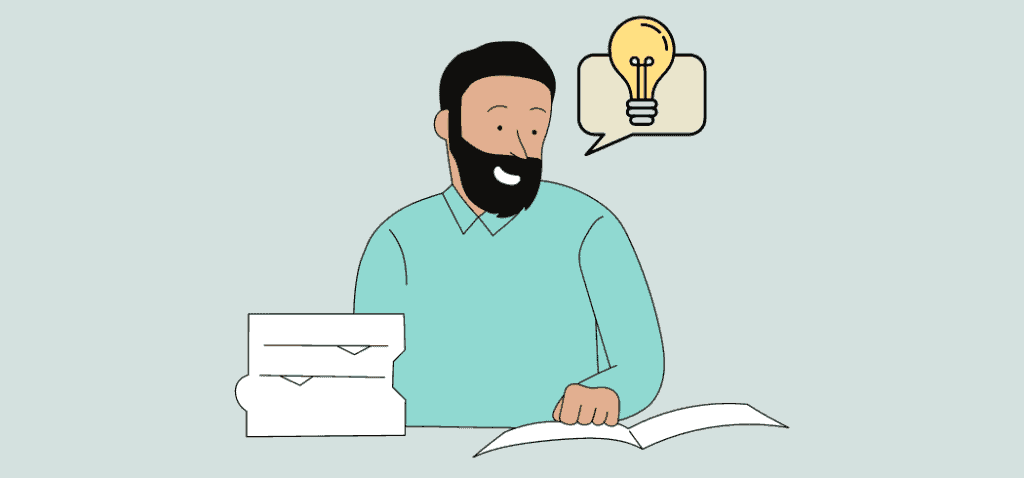
There are some ways to learn how to get your book edited. Regardless of your method, follow these nine tips to prepare your book for publication. They’re my sure-fire steps to self-editing successfully.
Take a Break from Your Story
Ideally, authors submit their work to the publishing company for the editing process. But if you consider yourself a professional editor, wait for a bit of time before book editing. That’s a lesson I learned from Stephen King, who sets his story aside for six weeks before editing it.
I don’t set mine aside that long because I also like to work on it while the story’s still fresh in my head. I find a reasonable length of time is a week.
Many editors suggest that authors spend some distance on their manuscript’s content for a few days. That way, you can return to the piece of writing with a pair of new eyes.
This is the secret to producing an excellent book. Once you’re ready, read it like you’re an outsider. Try not to think that you’re the author of the piece. Peruse the pages as if you’ve never heard of the book before.
Read Your Story out Loud
Reading your story aloud is one book editing tip you should follow after the writing process. Sure, I sound like a crazy person, and I drive my family crazy while reading an 80-100 thousand word story out loud, but it works.
This step requires you to be attentive as you read all sentences from the book manuscript. If you’re reading a book of poems, don’t forget to make a short pause for every line.
But this step isn’t the analytical, problem-solving process yet. You don’t have to check all the book elements yet. All you have to do is listen to what you wrote. I know some authors who do this by reading out loud to themselves, but others use the text-to-speech feature built right into Word, so it reads it for you like an audiobook.
Don’t get overwhelmed by the different writing aspects you will edit. Remember that an artist doesn’t start by shading the flowers of a tree in a very detailed manner. First, they sketch everything. Then, they add details and finishing touches.
A classic rule among prominent writers is to record themselves reading the pieces and playing it back. Try this tip so you know how your book “sounds.”
Do a Big-Picture Pass
This step is where professional book editors examine the book in terms of the whole story, character descriptions, and character development. One of the goals in making developmental edits is to address concerns about the plot of the writing project.
This can be worked into the self-editing process, or if you’re looking to do some professional editing for a potential client, this is a key step.
This level of editing should make you ask, is there a logical succession of plot points? Are there plot holes you should repair? Does every chapter contain a subplot relevant to the main story?
You also want to ensure the secondary characters have strong personalities to avoid character development issues. Are the character names easy to remember? Is there a consistent character voice?
Zoom in to Edit Scene by Scene
Developmental editing also includes checking the manuscript per chapter or scene. Every book editor should do this to make sure readers stay hooked.
The secret to producing a “real book” or “quality book” is ensuring every part of the entire manuscript has a purpose. Different book genres have their unique ways of showing this. Even a non-fiction book should have chapters that individually make sense.
Make sure the character details stay consistent throughout the chapters despite their changes. Don’t make the character development weak, especially with the protagonist. Make the chapter transitions smooth to prevent the readers from getting bored.
It’d be best if you also created a checklist for conflict and a checklist for dialogue. You want to escalate the conflict and allow it to create changes in the character. Remove unnecessary banter from the dialogue, then make the finale satisfying.
Be Your Own Copy Editor
Traditional publishing houses usually have separate copy editors who have mastered the grammatical rules. These experts also have sharp attention to detail to spot all spelling errors.
If you are your own copy editor, create a detailed checklist for the minor features to check. Beware of common spelling mistakes such as homophones. You should also know the difference between “its” and “it’s” and “your” and “you’re.”
Watch out for grammatical errors like incorrect verb tenses and wrong order of words. Then, pay attention to sentence flow. Are the complex sentences understandable? Are the sentence structures correct? Try changing some sentences from the passive voice to the active voice.
A copy editor is also in charge of word choice. Eliminate weak verbs, adjectives, and adverbs. For example, you can change “very bad” to “terrible” for conciseness. Remove excessive jargon, especially if your work caters to the general public.
Check for Accuracy
Aside from having an editing checklist for scenes and mechanical errors, you should also check for accuracy in writing style. It’s one of the editing goals many writers overlook. Following a specific style manual will help you spot basic errors in your content edit.
Some examples include APA, AP, Chicago, and MLA. There are also style guides that adhere to social media standards like BuzzFeed. Other style manuals include Conscious Style Guide and Disability Language Style Guide.
These manuals offer a comprehensive guide on correct word choice and formatting in writing. Use them to stay politically correct and consistent in your manuscript.
Get Beta Readers
It’s undeniable that behind a successful book is a team of editors. Beyond your self-editing process, you should have at least one beta reader to analyze your book into sections. They might not make any in-depth book edit, but they will give advice on plot and design errors.
Perhaps your beta reader will suggest ways to make a character interesting. Ask them how to make your female characters more empowering to the readers. Should there be an alternative viewpoint character for balance?
Your beta reader might also spot a single space between sentences that shouldn’t be there. You will be surprised at how they can help you improve your writing. I use two for my works of fiction.
Get a Proofreader
A proofreader will remove your fear of publishing your work since they will guarantee that the whole book is error-free. This editor will only check your manuscript at a basic level. They won’t have an editing checklist for POV nor evaluate if your work has a fast-paced chapter.
The proofreader takes one final look at your spelling, grammar, punctuation, and potential book layouts. They will read your work chapter by chapter to look for typos and grammar slip-ups.
Did you type “the” twice? Are you using descriptive verbs? Are the page numbers correct? Did you use the correct sentence structure? These are some questions a proofreader might have for your finished project.
Format Your Manuscript
Make sure to include the formatting stage in your manuscript’s timeline goals. Deciding on the format is daunting because you need to consider the font type, size, spacing, and margins.
A bullet-list style piece of writing has different formatting rules from a prose style. It gets even more complicated when the book includes poems.
You can use font styles for your book layout, like Times New Roman, Garamond, Caslon, and Baskerville. Make sure the font size is 12 without extra spaces between paragraphs. Indent every paragraph half an inch and check the chapter headers.
Common Book Editing Mistakes to Avoid
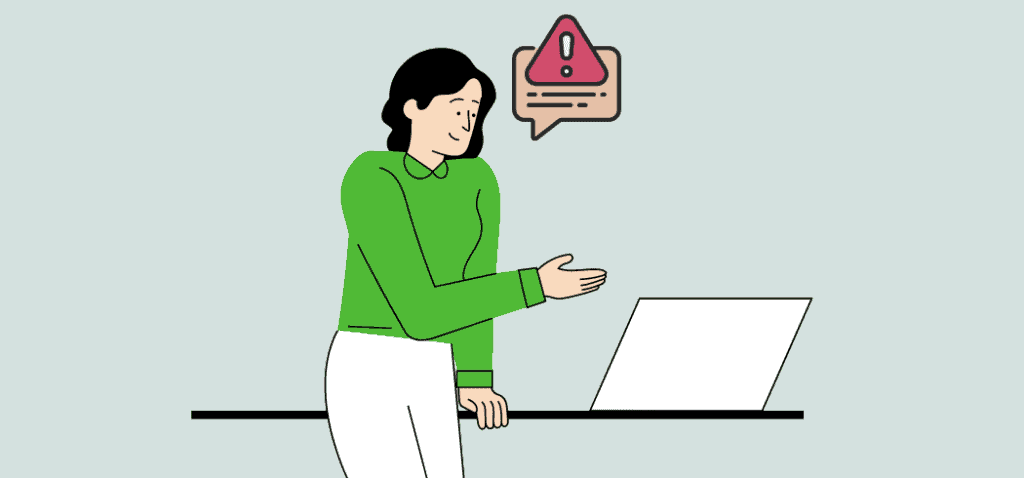
Even though their job is to fix errors, editors sometimes make missteps. Here are some common mistakes to avoid when book editing.
Using Long Words and Sentences
Why say “very good” when “excellent” is shorter and more intense? More concise and straightforward writing is always better than lengthy phrases and sentences. This classic rule is essential even if you’re editing a creative piece.
Aside from fixing your word choice, correcting the sentence structure is another way to shorten your piece. For example, instead of saying, “The book is read by me,” try “I read the book. Not only is the sentence shorter, but it also emphasizes the doer of the action.
Redundancies
Many editors fail to remove redundant sentences in stories. Make sure you don’t say the same thing you did in the previous statement. It’ll only bore your readers and make your point less clear to them.
Your readers will eventually get your main message the first time you mention it. And if they don’t, they can always go back to that passage. There’s no need to over-explain because your audience is more intelligent than you think.
Only Editing Once
Remember that your first draft should never be your only draft. You will edit your book several times at different aspects, dimensions, and levels.
You need to perform several read-throughs for copy-editing alone: one for spelling errors, another for grammar mistakes, and so on.
But before these stages, you must edit your paper based on the story. Check if all parts of the story are important and the characters have a purpose.
Relying Solely on Editing Apps
Spell and grammar checkers are helpful but cannot spot all mistakes in your manuscript. It would help if you still used your judgment to determine the accuracy of your work.
For instance, some spelling mistakes are contextual. Basic applications or software programs won’t be able to flag “it’s” as a misspelling when the correct term should be “its.” The same is true for other homophones like “sea” and “see.”
What is the Book Editing Process?
The traditional editorial process includes an author submitting their work to an agent. Then, the agent sends it to a publisher and a team of editors. These professionals will check the book from the more prominent aspect to the minor details.
First, editors review the overall content and structure. Then, they examine the paragraph and sentence structure, readability, and tone. Editors also look for spelling and grammar errors, making sure to give you adequate feedback.
Finally, a proofreader looks for any minor errors the previous editors missed. They are also responsible for fixing formatting issues on your manuscript.
How Do I Edit a Book in Word?
MS Word is not the best software program for long-form content. However, you can edit writing pieces by enabling the Track Changes feature on the Review tab. Then, another professional can “accept” or “reject” the changes you make.
This feature lets you track all the edits you and your editors make on the document. You may choose to display the revisions on the page using Show Markup.
How Many Times Should You Edit a Book?
The number depends on the number of drafts you have before coming up with the finished product. Ideally, your work should undergo four types of edits: developmental edit, line edit, copy edit, and proofreading.
A developmental editor is in charge of the big-picture changes. Then, a line editor will check the manuscript line by line for clarity, coherence, and word choice. You also need a copy editor for spelling and grammar errors. Finally, proofreading is for the final mechanical changes.
Do Authors Edit Their Own Work?
It’s not recommended for writers to edit their own work as a final means of editing. I always recommend self-editing as a single step in the editing process. While you can make big and small changes after the writing process, you still need to hand the manuscript to a professional editor.
Hiring an entire editing team may also be necessary, especially for fiction writers. If you’re a writer, consider your budget, number of beta readers, and timeline when hiring a book editor. Some types of editors you might hire include the developmental editor and copy editor.
How Many Hours Does It Take to Edit a Book?
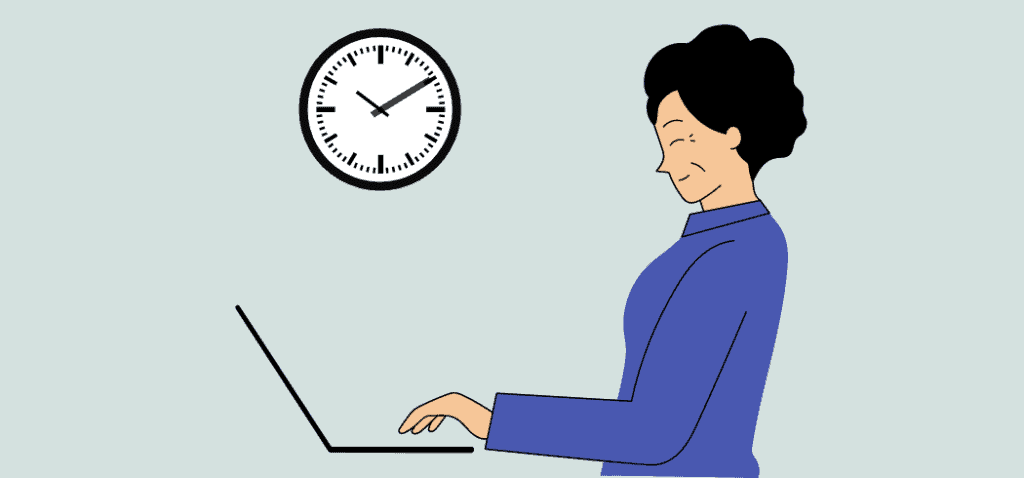
It takes days or weeks to finish several rounds of edits on a book. According to the Editorial Freelancers Association, developmental editors should edit 1-5 pages in an hour, whereas copy editors should finish 2-10 pages an hour.
These guidelines depend on the weight of the manuscript’s errors and the editor’s experience. Regardless of these rules, you must always take your time when self-editing so you don’t miss any mistakes.
What is the Best Way to Edit a Book?
The best method for editing a book for publishing is to seek the help of a professional editor. They will help you edit your manuscript on different levels.
Whether your book needs developmental editing, copy editing, or both, they can fix all types of errors and inconsistencies.
However, if you are going to edit your book yourself, take a break from it after the writing process. Doing so allows you to unlearn your role as the author and provide a fresh pair of eyes on the document.
Book Editing Checklist
Below is a downloadable self-editing checklist that will help you perfect your writing without anyone’s help.
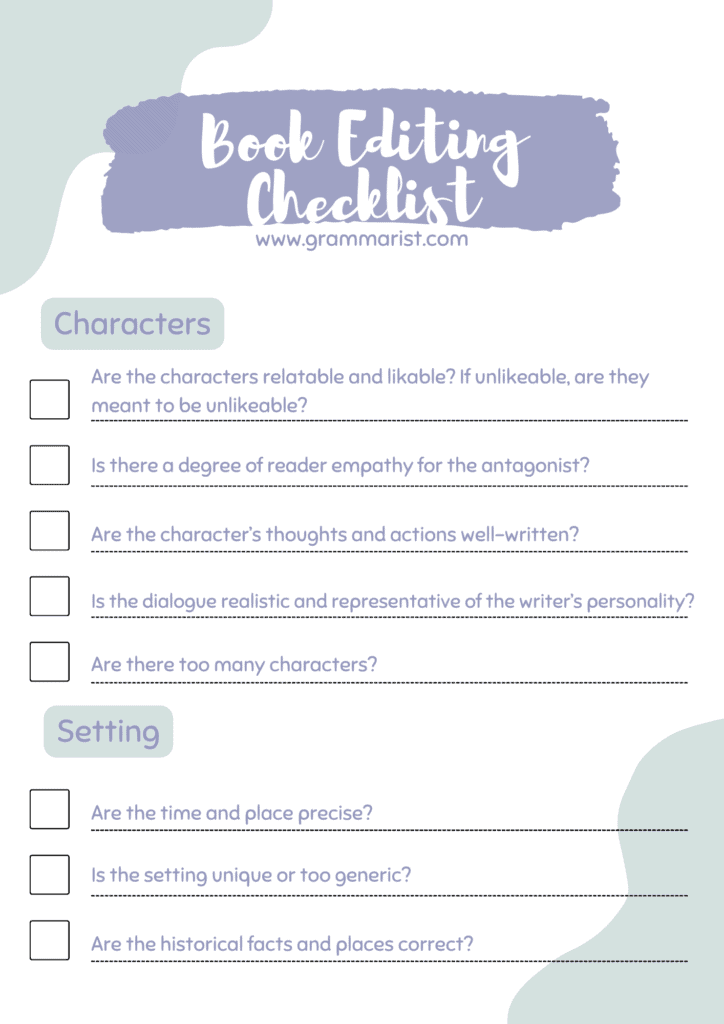

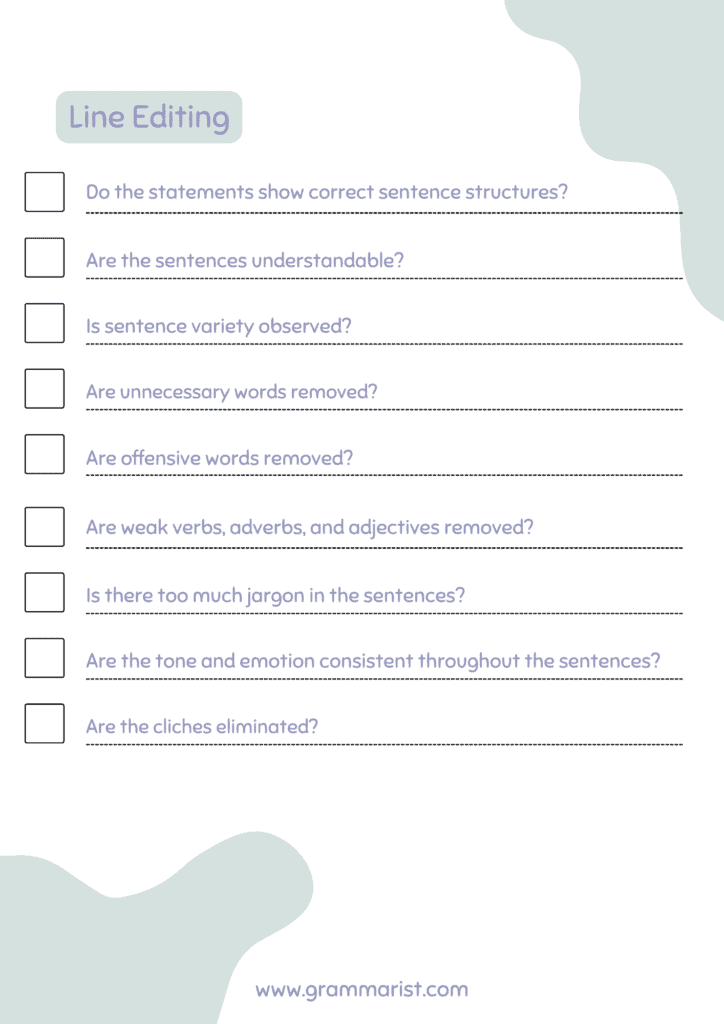
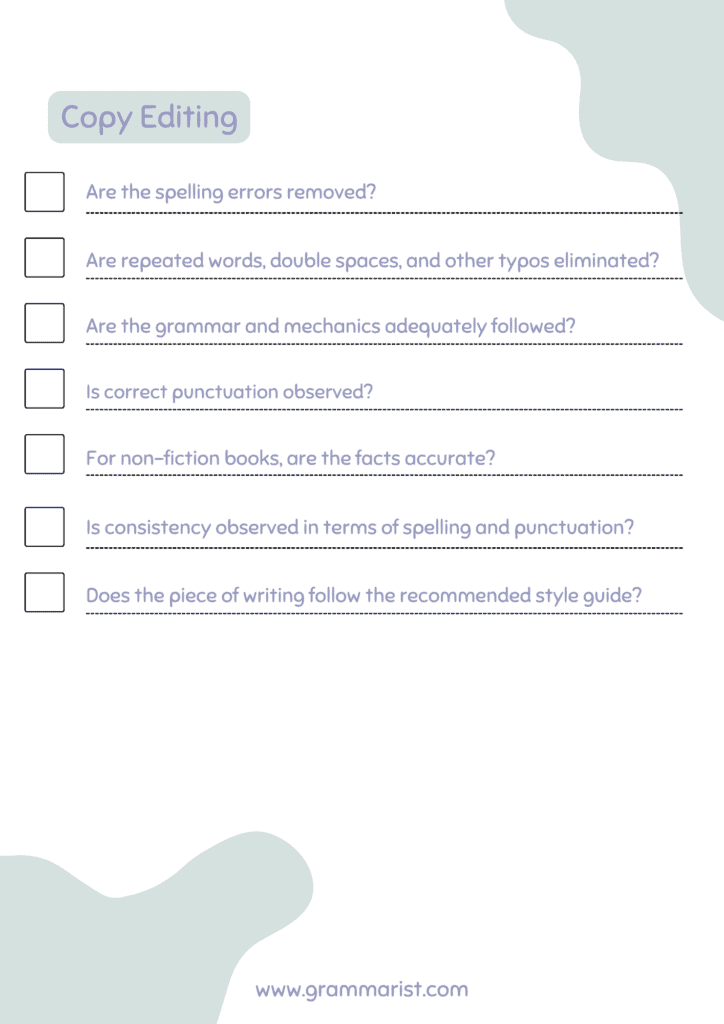
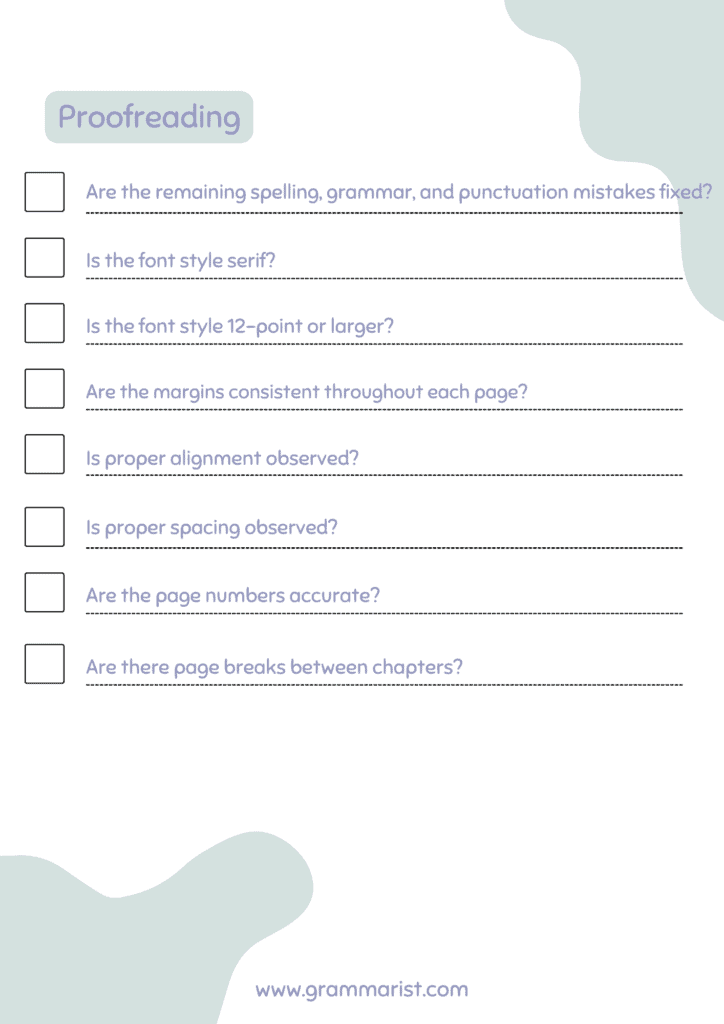
Editing is a Sacred Work
All authors need to learn how to edit a book, whether they write novels, non-fiction, or academic textbooks. You may use the checklist above as a guide for self-editing a book for publishing. This checklist considers both bigger-picture issues and detailed mechanical errors.
Remember that a book only has the ability to become perfect after the editing stage, so do not rush the process. Evaluate your manuscript thoroughly and learn from your mistakes.
